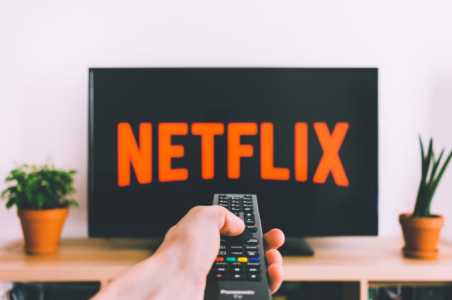Still paying for these hidden subscriptions? They could be draining $276 a year
- Replies 0
Many Americans are paying for more services than they actively use, and the extra cost often hides in plain sight.
Small recurring charges blend in with regular spending and are easy to overlook for months or even years.
While the amounts may seem minor individually, their combined total can be significant over time. For some households, this slow drain quietly takes hundreds of dollars a year without offering any real value.
Subscription services have surged in popularity, covering streaming, shopping, fitness, and more. Many people sign up during a free trial or for a special offer but then fail to cancel once the paid period begins.
CNET’s latest survey shows that the average American spends $1,080 annually on subscriptions, with a sizable portion for services they do not use.
This gradual build-up is known as “subscription creep,” where charges grow unnoticed over time. Younger adults often lose more money to unused subscriptions than other age groups.
Gen Z, for example, spends about $23 per month on subscriptions they no longer use, adding up to $276 annually.

While streaming platforms lead the list, fitness apps, gaming services, and meal delivery memberships also contribute to the total.
These seemingly minor charges add strain to personal budgets already affected by rising prices. Finding hidden subscriptions starts with reviewing all payment records carefully.
Bank and credit card statements can reveal recurring charges, including small monthly amounts that are easy to miss.
Searching through old emails for terms such as “subscription,” “renewal,” or “receipt” can also uncover forgotten accounts.
App store dashboards in Apple’s App Store and Google Play make it simple to see all active subscriptions linked to a device.
Subscription tracking apps are another option for quickly spotting unwanted services. Rocket Money, Bobby, Trim, Simplifi, PocketGuard, Subby, and Hiatus are among the tools that scan accounts for recurring charges.
Some apps even allow users to cancel directly within the platform, making the process more efficient.
Even if you choose to cancel manually, these tools can help identify which subscriptions are least valuable to keep.
Cancelling unwanted services can be as simple as using the “Manage Subscription” or “Billing” section on an app or website.
If you signed up through an app store, you can end the subscription directly from that platform. For services with unclear cancellation options, calling customer service is often effective.
Setting calendar reminders to cancel before a free trial ends can prevent future surprise charges. Cable and streaming price hikes have made it more important to cut unused subscriptions.
One major streaming platform increased its rates by 40%, while cable packages continue to get more expensive.
Cutting even a few services can save more than $200 a year without affecting everyday life. These savings can help offset other cost increases in the household budget.
Read next:

Have you reviewed your bank statements recently to check for unused subscriptions? It is surprising how often small, forgotten charges go unnoticed for extended periods. Which subscription was the most surprising to find on your own bill? Share your experience in the comments so others can see how quickly these costs add up.
Small recurring charges blend in with regular spending and are easy to overlook for months or even years.
While the amounts may seem minor individually, their combined total can be significant over time. For some households, this slow drain quietly takes hundreds of dollars a year without offering any real value.
Subscription services have surged in popularity, covering streaming, shopping, fitness, and more. Many people sign up during a free trial or for a special offer but then fail to cancel once the paid period begins.
CNET’s latest survey shows that the average American spends $1,080 annually on subscriptions, with a sizable portion for services they do not use.
This gradual build-up is known as “subscription creep,” where charges grow unnoticed over time. Younger adults often lose more money to unused subscriptions than other age groups.
Gen Z, for example, spends about $23 per month on subscriptions they no longer use, adding up to $276 annually.

Still paying for these hidden subscriptions? They could be draining $276 a year. Image source: freestocks / Unsplash
While streaming platforms lead the list, fitness apps, gaming services, and meal delivery memberships also contribute to the total.
These seemingly minor charges add strain to personal budgets already affected by rising prices. Finding hidden subscriptions starts with reviewing all payment records carefully.
Bank and credit card statements can reveal recurring charges, including small monthly amounts that are easy to miss.
Searching through old emails for terms such as “subscription,” “renewal,” or “receipt” can also uncover forgotten accounts.
App store dashboards in Apple’s App Store and Google Play make it simple to see all active subscriptions linked to a device.
Subscription tracking apps are another option for quickly spotting unwanted services. Rocket Money, Bobby, Trim, Simplifi, PocketGuard, Subby, and Hiatus are among the tools that scan accounts for recurring charges.
Some apps even allow users to cancel directly within the platform, making the process more efficient.
Even if you choose to cancel manually, these tools can help identify which subscriptions are least valuable to keep.
Cancelling unwanted services can be as simple as using the “Manage Subscription” or “Billing” section on an app or website.
If you signed up through an app store, you can end the subscription directly from that platform. For services with unclear cancellation options, calling customer service is often effective.
Setting calendar reminders to cancel before a free trial ends can prevent future surprise charges. Cable and streaming price hikes have made it more important to cut unused subscriptions.
One major streaming platform increased its rates by 40%, while cable packages continue to get more expensive.
Cutting even a few services can save more than $200 a year without affecting everyday life. These savings can help offset other cost increases in the household budget.
Read next:
- You might be overpaying for internet—here’s how to fix it fast
- Are you paying for subscriptions you don’t use? Here’s how to take back control
Key Takeaways
- Small recurring charges blend in with regular spending and are easy to overlook for months or even years.
- CNET’s latest survey shows that the average American spends $1,080 annually on subscriptions, with a sizable portion for services they do not use.
- Gen Z, for example, spends about $23 per month on subscriptions they no longer use, adding up to $276 annually.
- Cutting even a few services can save more than $200 a year without affecting everyday life.






